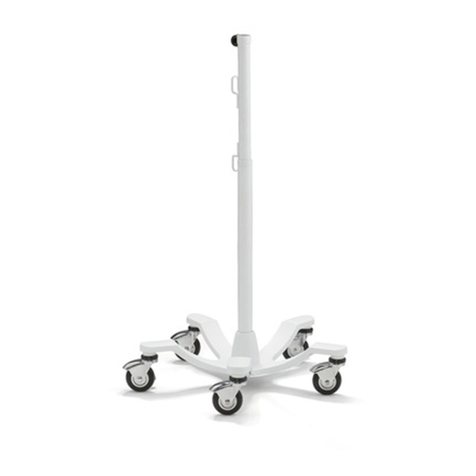
8
RIDGID 10-inch Table Saw
Model TS2400
1. Place the stand in the set-up position
as shown.
2. Align the four holes supplied in the
work stand table with the four larger
holes in the table saw base as shown.
3. Starting at the carry handle end of the
work stand, insert the four supplied car-
riage bolts up through the table of the
work stand and then through the saw
base.
4. Install the washer, lockwasher and wing
nut on top and tighten securely.
1/4-20 x 3 In. Carriage Bolt
1/4
1/4 In. Wing Nut
Washer 1/4 In.
Lockwasher
Set-Up Position
Mounting Power Tools
WARNING: To reduce the risk of
injury from accidental start, make
sure switch is “OFF” and plug is not
connected to power source outlet.
Before you start:
RIDGID TS2400 table saw bolts directly
onto this work stand. Most other tools
including RIDGID MS1050 and RIDGID
MS1250 miter saws will need additional
supports to aid in attaching a tool to work
stand.
The hardware and mounting materials
shown in this manual are the minimum
size recommended for safe attachment of
a power tool to this work stand. Any devia-
tion from this is not recommended.
This stand is primarily recommended for
use with portable table saws. Other appli-
cations such as miter saws and other
tools weighing less than 100 pounds are
described below.
We recommend using wooden mounting
blocks as explained below to attach any
tool other than the RIDGID TS2400 table
saw. Any holes drilled in the work stand or
screws attached to the table of the work
stand may cause damage to the product
or interfere with the function of the work
stand.
NOTE: In miter saw applications you must
build a wood base between the stand and
saw. This will prevent interference of
longer work pieces with the carry handle.
When you are finished attaching your saw
to the stand re-read the “Operation” and
“Safety Instructions” sections of this man-
ual. Make sure that you understand how
to set-up and knock-down the work stand
safely. Saw and work stand combination
must be stable in order to operate safely.
CAUTION: At every work place loca-
tion the saw and stand must not rock
or tip over. If rocking or tipping
occurs, relocate the stand to a more
stable work place.
WARNING: To reduce the risk of
injury from the tool moving or falling
off stand, always check that all
mounting bolts and nuts are tight
before moving stand or using tool.











































